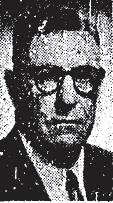
Number 239 Twenty-second street (now numbered 41 W. 22nd) was a virtual who's who of the underworld in the first decade of the 1900s, an interracial mixing of Chicago's once and future vice kings in the midst of the Levee.
The building appears to have housed a first-floor saloon, with various gambling, billiards and off-track betting operations on the second floor. It was on the second floor that "Big Jim" Colosimo, future titan of the Levee and founder of the Chicago Outfit later run by Johnny Torrio and Al Capone, founded his first establishment, the Colosimo Billiard and Pool Room Parlor, sometime about 1904. The Parlor was connected by telephone, a sure sign in those days that a horse racing handbook was operating within, as race information needed to be distributed quickly to bookmakers (see, e.g., the Mont Tennes operations).
 (pictured: James "Big Jim" Colosimo)
(pictured: James "Big Jim" Colosimo)
In his authoritative volume on Colosimo, Arthur Bilek claims that Big Jim hired two of his brothers-in-law, Joseph and John Moresco, to work at the Parlor (this was before Colosimo divorced his first wife, Victoria, for a new love interest), and that these two eventually took over the business while Colosimo concerned himself with his Cafe and various brothels.
 (pictured: James "Big Jim" Colosimo)
(pictured: James "Big Jim" Colosimo)In his authoritative volume on Colosimo, Arthur Bilek claims that Big Jim hired two of his brothers-in-law, Joseph and John Moresco, to work at the Parlor (this was before Colosimo divorced his first wife, Victoria, for a new love interest), and that these two eventually took over the business while Colosimo concerned himself with his Cafe and various brothels.
The second floor was also the site of the Frontenac Club, a joint operation between three of the city's top gambling lords: policy (lotto) king John "Mushmouth" Johnson, dice-man Bill Lewis, and Tom McGinnis, who was at times an independent bookmaker and at other times associated with the Mont Tennes and Jim O'Leary syndicates. The Club opened May 1, 1906. Notably, though Johnson and Lewis were black, the Frontenac Club catered exclusively to white customers of means (a gambler had to flash at least $10 -- roughly a week's wages for a typical laborer -- in cash at the door to be admitted). The name of the Club evoked 17th Century Quebecois leader and Indian fighter Count Frontenac, and so symbolized old world wealth and aristocracy in a city short on both. Reports at the time indicated the Frontenac Club turned profits of $200 per day (nearly $5,000 in 2008 dollars), which was split in thirds between the owners.
The building's popularity among the Levee's elite kings of vice may have been due to its central location. 22nd and Dearborn was ground zero for the red light district, and some of the better establishments, catering to a higher class of sinner, such as the Everleigh Club, were just across the street.
After Mushmouth Johnson died in 1907, it's not clear what became of the Club. A report in 1908 indicates the police raided operations on the second floor of the building and discovered a big craps game run by Bill Lewis, with mostly black players, a fact which suggests the Frontenac had either closed or changed substantially in character, although it's possible the Lewis game took place in a separate room.
That the building was still a major gambling resort in 1909 is certain from the fact that it suffered a dynamite attack in the Gamblers' War that year. The owner of the first floor saloon, old-time Satan's Mile barkeep John Morris, claimed there was no gambling currently in the buildilng (highly unlikely), though he admitted the second floor housed poker rooms at some time in the past.
As late as 1920, Colosimo's old billiards room, apparently consolidated by Bill Lewis, was still in operation. After the closure of the Levee in the mid-1910s, most of the big names in vice had moved either into the suburbs or further south (for instance, Lewis was by that time headquartering at a notorious mixed-race craps game on 35th street), but many gambling and vice resorts were still operating surreptitiously at that date.
The buildling was demolished in the mid-1950s as the entire Levee district was slowly redeveloped by the Chicago Housing Authority for low-income residences. The CHA's headquarters building between 1961 and 1974 was located on the southwest corner of Dearborn and 22nd (by then renamed Cermak Rd.), right where the Colosimo-Johnson building once stood. Ironically, the CHA left in 1974 citing crime in the nearby Ickes and Hilliard projects they managed. Robert Loeffley, information director for the public housing agency, told reporters
Because the present office location is in the midst of a string of public housing developments, people have the idea, whether it's true or not, that the neighborhood is unsafe.
The site is now part of the campus of the "National Teacher's [sic] Academy," a public magnet school opened in 2002.















